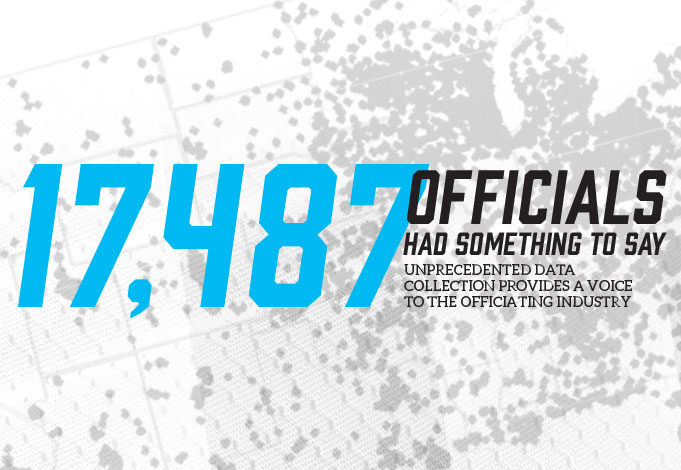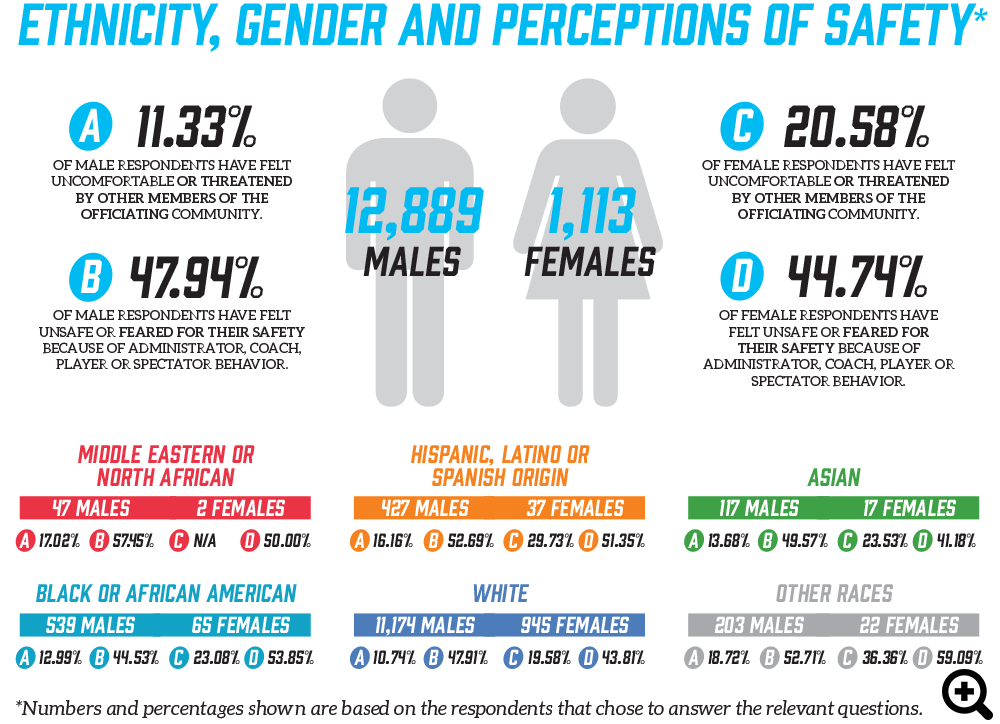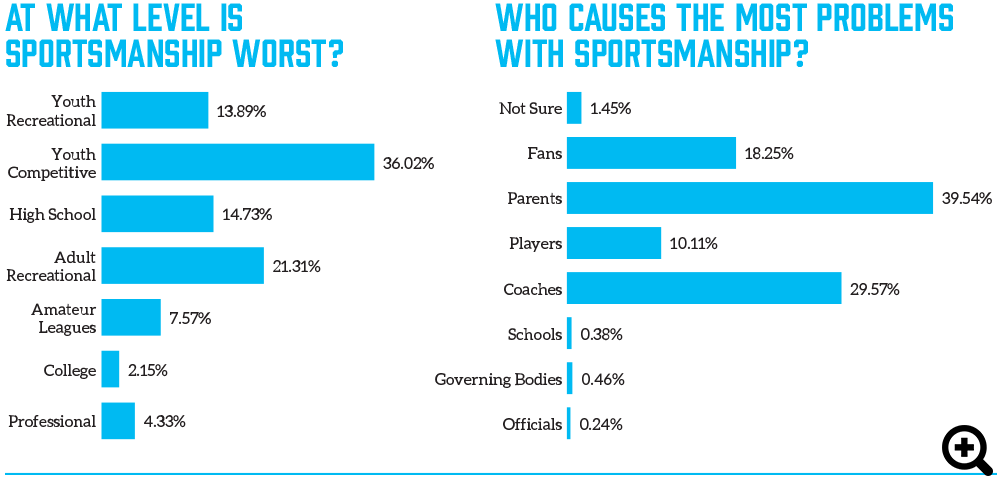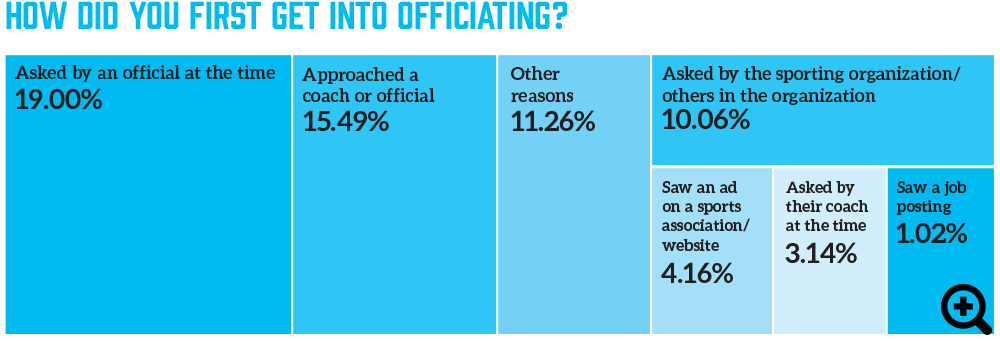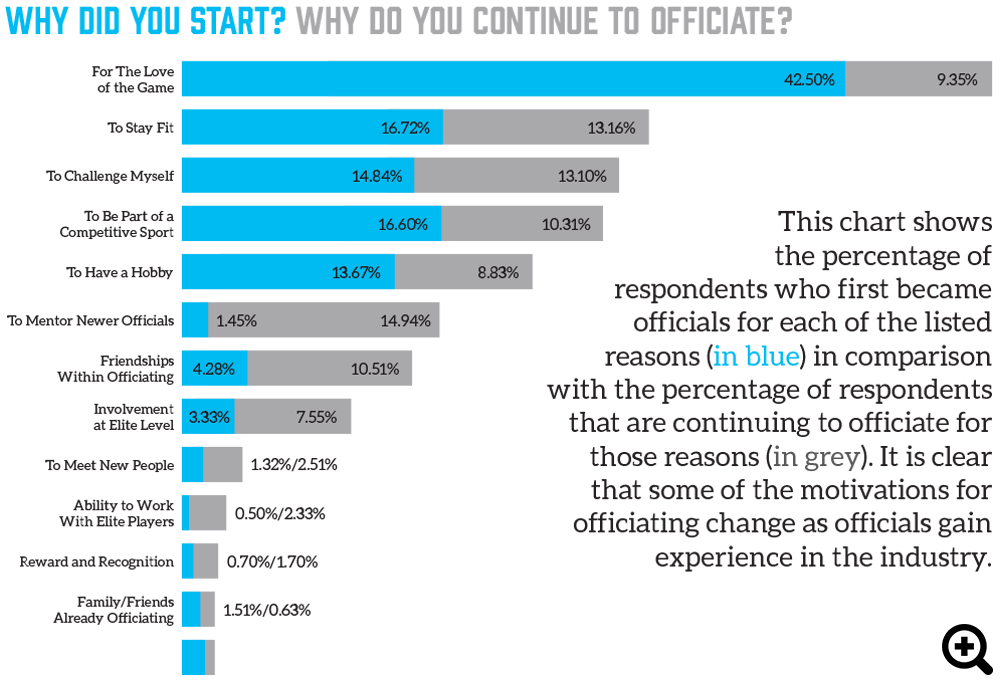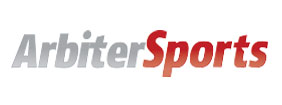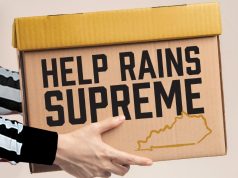17,487. That is the number of officials whose investment in this avocation motivated them to respond to the recent National Association of Sports Officials survey. Recently, the largest survey ever conducted in the officiating industry was carried out by NASO and sponsored by Peopletrail.
The project began as an effort by NASO to explore how data might be used to improve the officiating industry. It was intended to be a project that cracked the door open to data collection and hinted at what information might be discovered.
However, as fate would have it, the officiating world did not want the door to be subtly cracked open. Officials are ready to have their voices heard, not just in the future, but now.
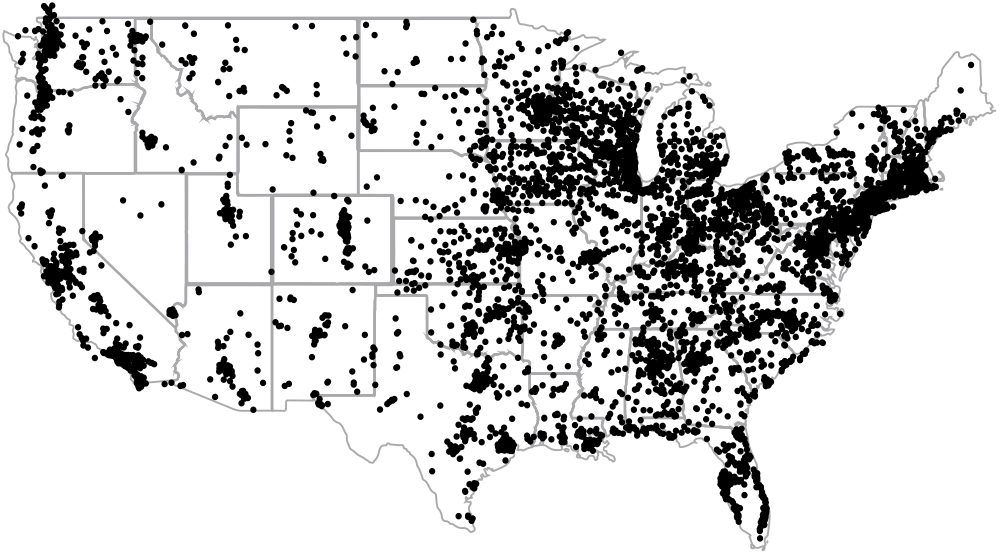
And now, NASO is ready to reveal collected data to the officiating community with meaningful visuals. As might be imagined, the door that has been swung open through this survey will provide the opportunity to explore many officiating topics for a long time to come.
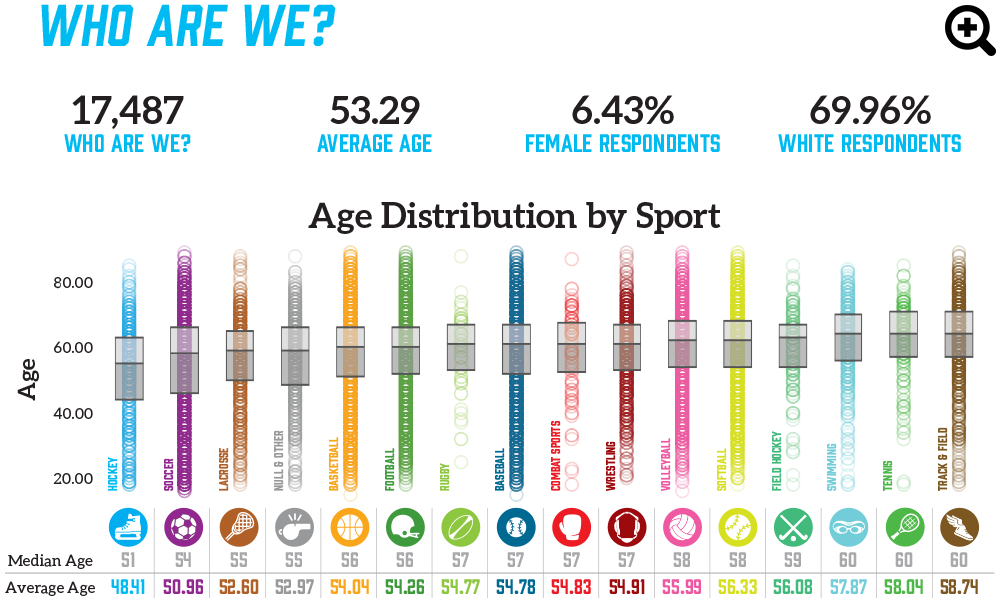 The charts above show the average ages of officials in each sport. The line across the inside of each box shows the median age of officials in that sport. The box represents the range of ages of the middle 50% of the officials in each sport with the upper and lower hinges showing the upper and lower age limits of that middle 50%. The fact that some officials are significantly younger than most of the officials in a sport, or outliers, explains why the mean age is lower than the median age.
The charts above show the average ages of officials in each sport. The line across the inside of each box shows the median age of officials in that sport. The box represents the range of ages of the middle 50% of the officials in each sport with the upper and lower hinges showing the upper and lower age limits of that middle 50%. The fact that some officials are significantly younger than most of the officials in a sport, or outliers, explains why the mean age is lower than the median age.
Note: The mean age is the sum of all of the participants’ ages divided by the number of respondents that answered this question. The median age is the middle value of all of the ages when the ages are put in order from youngest to oldest.
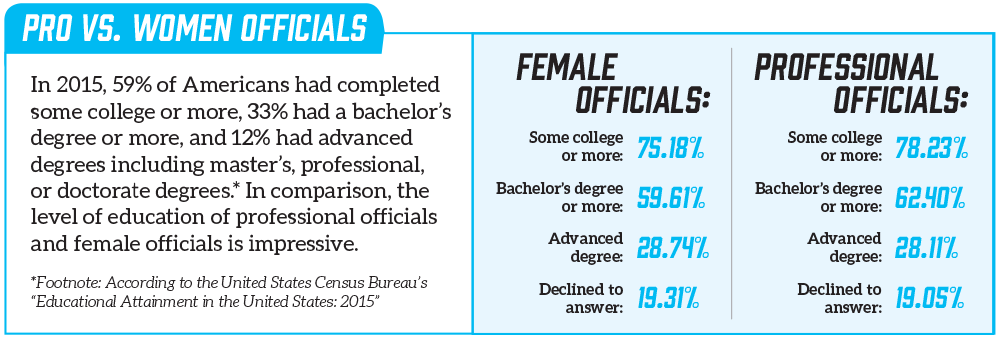
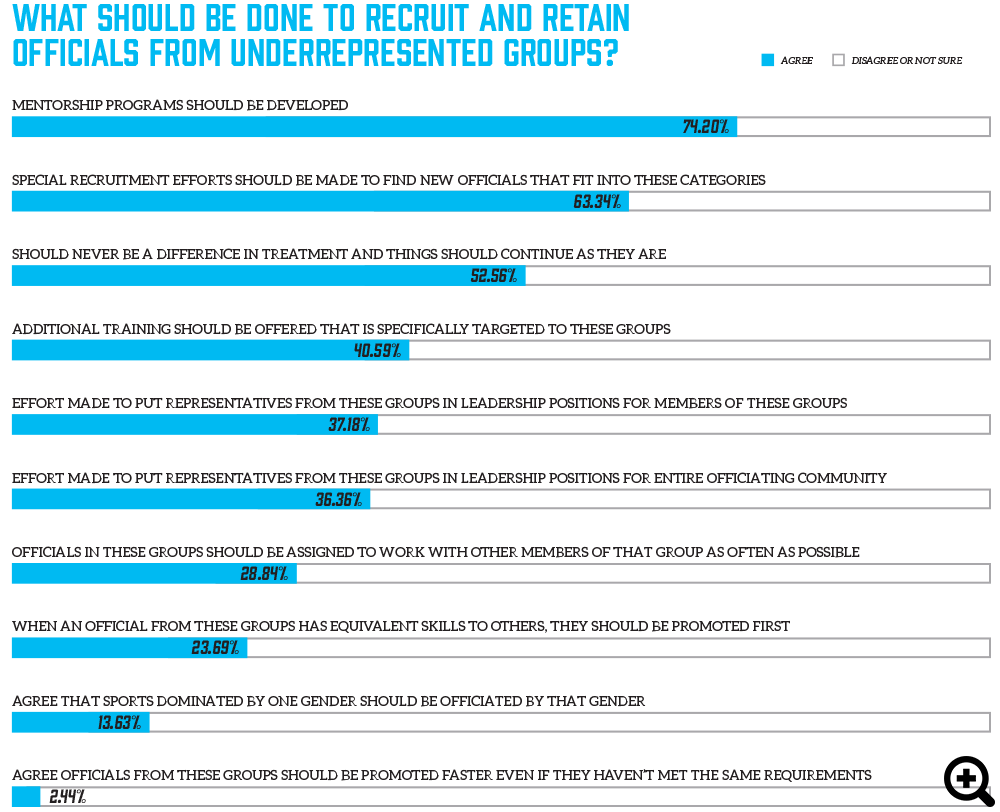 Important note: When officials are filtered by gender, ethnicity or age, the trends in responses remain very similar. This means that officials as a whole, no matter what group they might be categorized into, have similar views on what types of action should be taken to incorporate more officials from underrepresented groups into the officiating ranks.
Important note: When officials are filtered by gender, ethnicity or age, the trends in responses remain very similar. This means that officials as a whole, no matter what group they might be categorized into, have similar views on what types of action should be taken to incorporate more officials from underrepresented groups into the officiating ranks.

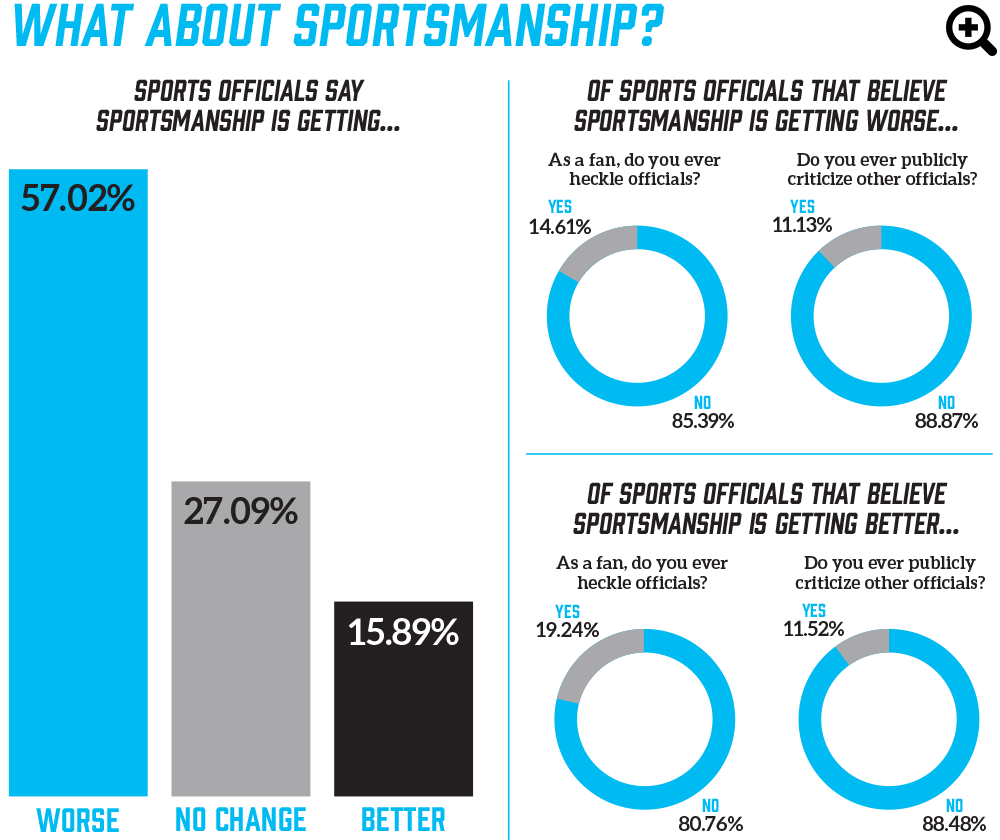 With 57.02% of respondents feeling sportsmanship is getting worse, we have a clear indication that action must be taken to improve sportsmanship. Unfortunately, even among the 57.02% that feel sportsmanship is getting worse, a substantial percentage heckle (14.61%) and publicly criticize (11.13%) other officials.
With 57.02% of respondents feeling sportsmanship is getting worse, we have a clear indication that action must be taken to improve sportsmanship. Unfortunately, even among the 57.02% that feel sportsmanship is getting worse, a substantial percentage heckle (14.61%) and publicly criticize (11.13%) other officials.

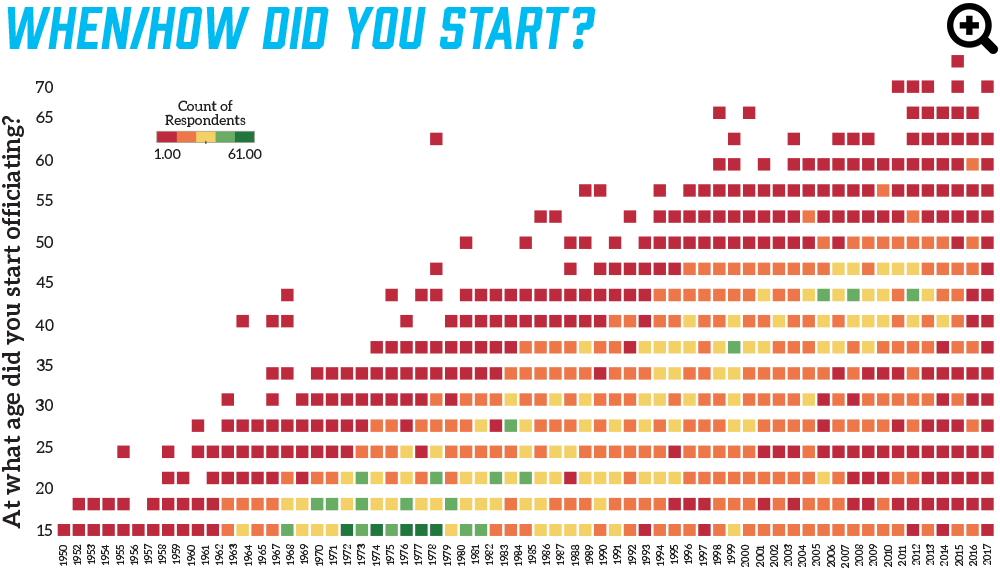
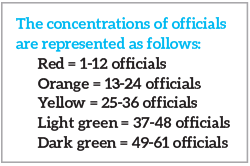 The chart shows the ages and years at which officials began officiating. The colors indicate how many officials joined the ranks at each age and year intersection. The red shows the lowest concentration of officials, with orange, yellow, light green and dark green each incrementally showing higher concentrations. This chart tells a story with the clear pattern of higher concentrations of officials starting the avocation at older ages with the advancing years.
The chart shows the ages and years at which officials began officiating. The colors indicate how many officials joined the ranks at each age and year intersection. The red shows the lowest concentration of officials, with orange, yellow, light green and dark green each incrementally showing higher concentrations. This chart tells a story with the clear pattern of higher concentrations of officials starting the avocation at older ages with the advancing years.

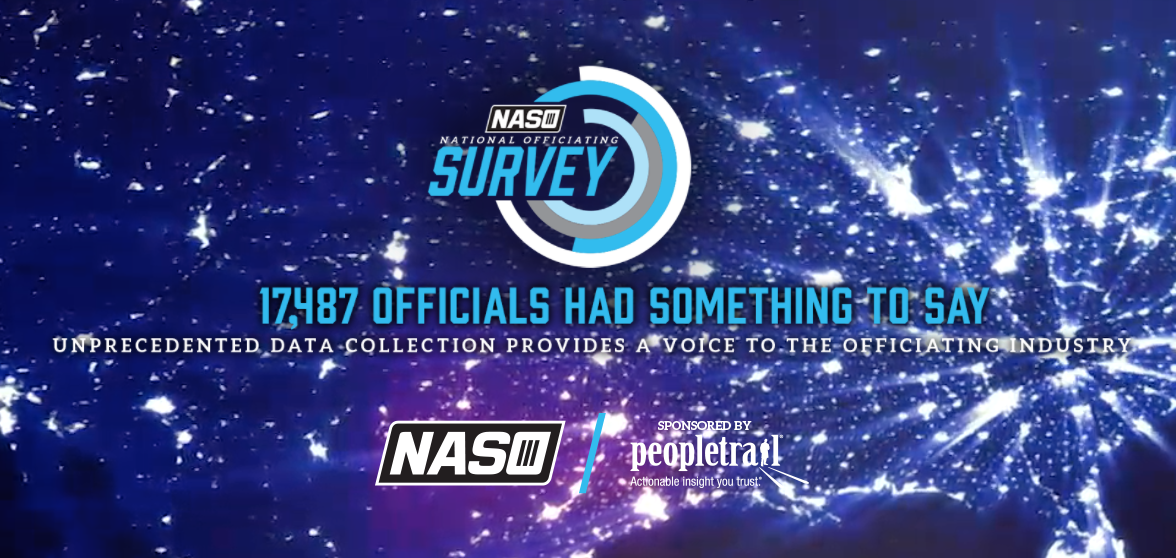 Visit NASO National Officiating Survey Website
Visit NASO National Officiating Survey Website


The National Sports Officiating Survey was made possible by the National Association of Sports Officials and sponsored by Peopletrail.
Special thanks to Continuus Technologies for providing technical support, and to ArbiterSports and the National Federation of State High School Associations, along with the dozens of state high school associations, sports governing bodies, college conferences, leagues and associations for their efforts in distributing the survey.
What's Your Call? Leave a Comment:
Note: This article is archival in nature. Rules, interpretations, mechanics, philosophies and other information may or may not be correct for the current year.
This article is the copyright of ©Referee Enterprises, Inc., and may not be republished in whole or in part online, in print or in any capacity without expressed written permission from Referee. The article is made available for educational use by individuals.

